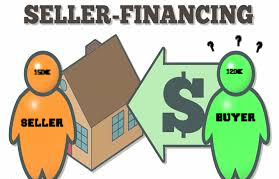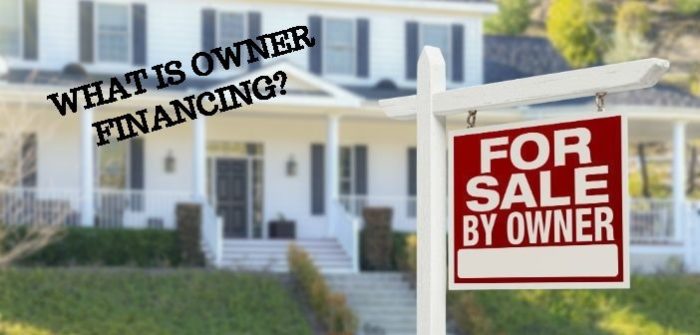Owner financing is the secret weapon for buyers and sellers to strike a deal that is a win-win by thinking creatively. It can go by many different names: owner financing, selling on terms, buying with payments, etc. Let’s dive into what it means and the reasons for why it’s such a powerful tool.
What is Owner Financing?
When the seller of a house acts as the bank for a real estate transaction, the seller agrees to take payments for a specified period of time while the buyer takes possession of the house right away. It can be called selling on terms, or “a terms deal,” because the two parties can negotiate price, interest, down payment, monthly payment, balloon payment, or length of the loan to make it a fit for everyone.
Terms usually fit in 1 of 3 scenarios:
- Amortized Payments: Just like a typical bank loan, each payment will have some interest and some principle, depending on the length of the loan. This is not common in seller financing deals as committing to one of the other 2 options can focus in more on the advantage that fits the seller or buyer best.
- Principle-Only Payments: This structure is often used for its simplicity. It’s much easier for a buyer or seller to understand the deal when talking in terms of adding payments together to equal the purchase price of the house. 180 payments of $500, for example, is a 15 year loan for a $90k house.
- Interest-Only Payments: The payments will never reduce the principle balance of the loan (that is, what the buyer owes the seller to close out the loan). This structure requires a balloon payment, which is an agreed-upon day that the buyer will pay the rest of the loan off in one large lump sum to pay off the loan.
 Example: Let’s use an example to further understand. A seller wants $150k for his house, but a buyer is confident he can only pay $120k. It may be assumed that since a buyer won’t pay the sellers price, the house is probably worth less than what the seller is asking. The two go back and forth a bit and find that the $30k gap is just to big to meet across.
Example: Let’s use an example to further understand. A seller wants $150k for his house, but a buyer is confident he can only pay $120k. It may be assumed that since a buyer won’t pay the sellers price, the house is probably worth less than what the seller is asking. The two go back and forth a bit and find that the $30k gap is just to big to meet across.
Enter: Owner financing. The buyer can offer full price of $150k if the seller agrees to take payments, because the buyer doesn’t have to have all the cash right now. The seller wants to see some skin in the game, so he requests a 10% down payment from the buyer. Buyer agrees, but tries to push out the timeline of cash needed by offering even payments for 20 years ($562.50/mo). Seller counters to 15 years as he has plans for the cash in that time frame. Thus, they agree to $15k down, and monthly payments of $750, which will pay the loan off in 15 years.
They turned a $30k gap into a great deal for both of them! That’s the power of owner financing.
Some of you out there are already ahead of me…
“Wait a minute, this means the seller likely isn’t getting the full amount of their mortgage up front, and unless they have a ton of cash laying around, that mortgage isn’t going anywhere!”
This is precisely correct, and this is why most sellers have to own the house free and clear or just have a small amount of mortgage left that the buyer’s down payment can cover. There are still ways to work around the mortgage, but we’ll have more on that in a future article.
Is Owner Financing Safe? Many sellers may find out about this method of financing real estate when their buyer offers it to make the numbers work. Naturally, they quickly realize this means they don’t get all their money right away and may start to wonder about risk. Here’s the #1 reason owner financing is safe: 1st position lien on title. This means the seller can foreclose and take the house back (and keep all the down payment and monthly payments they collected so far). Of course, they want to make sure to draw up the paperwork to make it as easy as possible to foreclose if needed, but that’s always a worst-case scenario.
Another way to hedge the risk the seller takes is to vet the buyer. Are they reliable? Do they have a good reputation? How is their credit score displaying their attention to honoring their financial obligations? As much detail as you can obtain about the buyer will help secure a safer loan.
How Does Owner Financing Work?While the rest of this article is mostly conceptual, this is a common question that pokes at the logistics of this type of deal. It might sound complicated or tricky, but the beauty of seller financing is its simplicity in comparison to any other type of financing. In fact, since the buyer will have the down payment in cash, closing can be scheduled as soon as the title work is ready, as opposed to the 6 weeks needed by the bank! Here’s an example from an actual owner financed deal that we did here at Skyline.
Owner Financing Work?While the rest of this article is mostly conceptual, this is a common question that pokes at the logistics of this type of deal. It might sound complicated or tricky, but the beauty of seller financing is its simplicity in comparison to any other type of financing. In fact, since the buyer will have the down payment in cash, closing can be scheduled as soon as the title work is ready, as opposed to the 6 weeks needed by the bank! Here’s an example from an actual owner financed deal that we did here at Skyline.
The seller’s asking price was higher than we could do for several rental properties they owned. The seller liked the income from the properties, but was nearing retirement age and wasn’t interested in managing rentals for much longer. We offered full price with interest-only payments.
After going back and forth a few times, we eventually agreed to the terms and struck a deal with a signed purchase contract. The contract was the same one we use for a standard home sale, but we added monthly payment, down payment, etc, to the “payable as follows” section.
When it came time to close on the property, we wired our down payment to the closing office. The closing office had prepared a Promissory Note that laid out the terms of the loan. It also gave the seller 1st lien position on the

properties, so if we ever stop paying, the seller has legal right to foreclose and reclaim possession. The closing office filed the title in the name of the new buyer, and also filed the lien position on the title in the county records. We set up our bank account to make monthly automated payments of the full monthly payment. The seller gets a surprise the beginning of every month like clock work.
B O O M. Seller moves on from landlording, and our portfolio has an opportunity to grow.
Who Should use Seller Financing? What Scenarios Are Best for Seller Financing? Here are some common situations that leverage the power of seller financing.
- This tool is great for sellers who are tired of landlording, but don’t want to lose their income from the properties. In fact, that is the most common scenario for seller financing. The seller has income to carry them a decade or two into retirement. They don’t have to rely on family or social security checks to live!
- Other sellers may leverage selling on terms in order to maximize every penny they can get out of a house. Perhaps they agree to a $150k purchase price with monthly interest-only payments and a balloon payment in 10 years. Thus, by the time the deal is done, this seller will have received $150k + 10 YEARS of interest payments.
- Still other sellers are concerned about tax strategy. If they sell their house outright in a typical transaction, income and/or capital gains taxes reduce their take-home money significantly. By stretching it out into payments, they have time to trickle the money into the venues of their choice without being hit by a huge tax bill.

